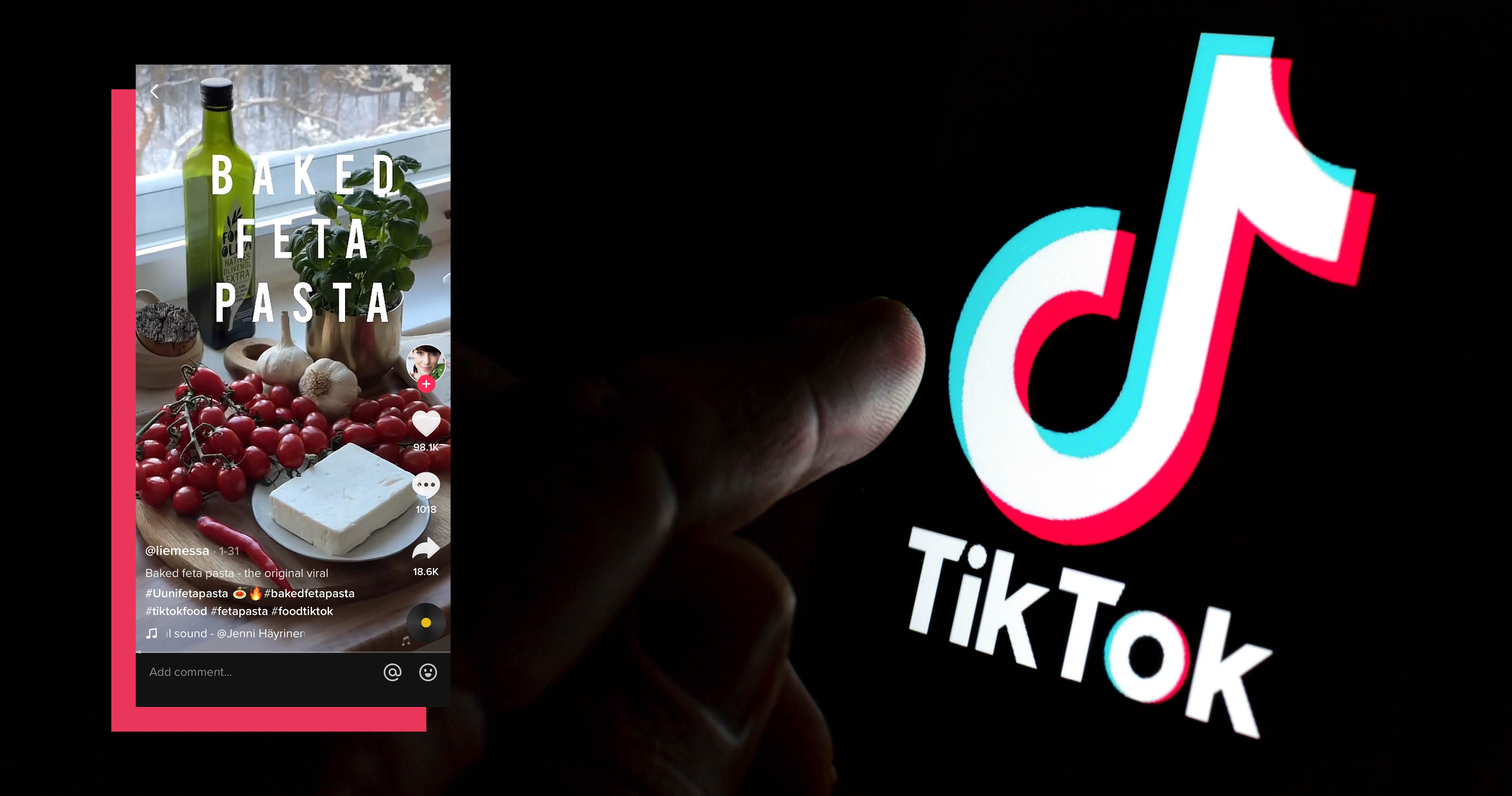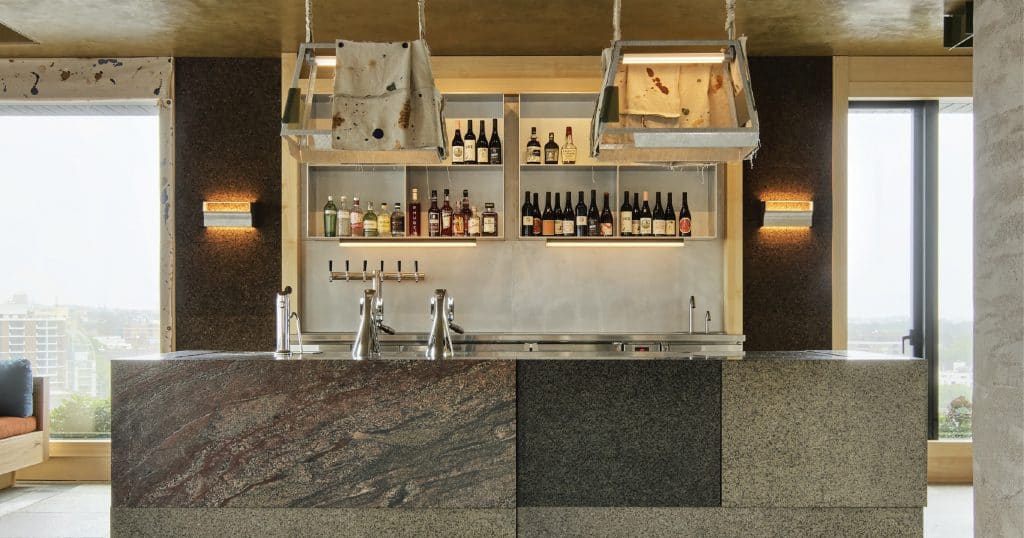
TikTok is more than an app developed for teenagers to enjoy the latest dance challenges. It has over one billion monthly active users, is available in 150 countries and has been downloaded over 200 million times in the US alone, making it the fastest growing social media app.
TikTok is a short-form video-sharing app, allowing users to create 15-second clips initially, growing to 60-second and three- minute clips. Food videos have become popular during the pandemic. There are over 209.5 billion videos tagged as #food and 41 billion tagged as #tiktokfood. During lockdowns many people embraced quarantine cooking, finding inspiration on TikTok.
“The impact of TikTok has been strong already in the US,” says Wade Koehler CAE, executive director, FCSI the Americas. “If you look at Burger King and Applebees, trending songs on TikTok progressed from viral TikTok to full television advertisements and social media campaigns. Another viral TikTok to watch is @kylescheele who created a fake stand-up ad and secretly placed it in a Kum and Go Travel Store live on TikTok. It got so much publicity that Kum and Go, along with Red Bull and other brands, are now collaborating with him.”
Going viral
One of the most viral of the TikTok videos is the baked feta pasta. The hashtag #fetapasta had collected 661.7 million views by March 2021. Back in February 2018. Finnish blogger Jenni Hayrinen posted a recipe of uunifetapasta, Finnish for oven baked pasta, on Instagram. It quickly went viral in Finland with the original recipe viewed more than 2.7 million times in a country with a population of just 5.5 million. It is a simple recipe of a block of feta, cherry tomatoes and chillies baked in the oven until it melts and then mixed with cooked pasta. Her post was picked up by TikTokers in the US in 2019. More than three years on, people are still making variations of this dish around the world.
This TikTok phenomenon resulted in a surge in sales of feta cheese around the world, sales rocketed by 117% at Instacart in the US, and supermarkets from the US to Australia sold out. In February 2021, TikTok users celebrated International Uunifetapasta Day, by cooking the recipe for their families and friends.
During the early days of the pandemic in 2020, the dalgona coffee – a whipped coffee drink from South Korea – caught people’s attention. More recently, with the popularity of Netflix series Squid Game, TikTok users have embraced the dalgona candy challenge – making the honeycomb candy inspired by the show.
TikTok’s typical viewers makes it an ideal partner for businesses trying to reach a particular segment of the population. “Although I haven’t fully maximized the potential of TikTok as a platform, it is an effective way to target a certain demographic, which happens to be part of our target market at Don’t Doughnuts,” says Miko Aspiras, acclaimed pastry chef and owner of Don’t Doughnuts in Sydney, Australia. “It’s a fun way to showcase the characteristics that our brand possesses.” Aspiras creates fresh video content every month, to build more exposure to their doughnut business.
You don’t need to be a top chef or celebrity to create video with the potential to go viral. Many of the top food influencers on TikTok are not food professionals. Tabitha Brown known as @ iamtabithabrown is an actress based in the southern US, who experienced chronic pain and fatigue. After trying a 30-day vegan challenge, she observed improvements in her health. She only began sharing vegan recipes and cooking tips in early March 2020, but her following quickly grew to two million people.
One of the youngest TikTok food influencers is Maya Smith, @starbucksrecipeswithm. A Starbucks employee, she started sharing recipes for popular and secret drinks. Her most popular is the Skittles Frappuccino with more than 33 million views and 5.8 million likes. She now has two million followers.
All it takes is one recipe to become viral. For Shereen Pavlides @cookingwithshereen, a former spokesperson on QVC, her most viral recipe is her banana bread viewed by over 20 million people.
Getting creative
TikTok is also a resource mined by publishers and agents for future talent. Poppy O’Toole (@ poppycooks) was made redundant from her job as a junior sous chef at the AllBright private members club in London’s Mayfair during the first wave of the pandemic. Stuck at home in lockdown, she uploaded her first video on April 1, 2020. A year later, she has 1.9 million followers on TikTok, securing a book deal with Bloomsbury to publish Poppy Cooks in September 2021.Even for established cookbook author, Betty Ann Quirino, based in the US, TikTok plays a part in her creative process. “I have a private TikTok account,” she says. “I don’t see it as a tool to help boost my blog or increase my followers, because I don’t post for those reasons. I’m merely on it for the fun of creating a 15-second video.”
She believes TikTok works for a certain audience. “Restaurants who have a younger demographic might benefit from it,” she says.
Working an algorithm, TikTok is equally open to Gordon Ramsay with 29 million fans, chefs between jobs such as O’Toole, and food innovators such as Maya Smith. Like other social media platforms, TikTok benefitted from the pandemic, with creators gaining millions of followers in months. Stuck at home, consumers started cooking more and sharing their creations.
TikTok has been downloaded more than two billion times, with a record 315 million downloads recorded in Q1 of 2020, when the world hunkered down for the pandemic, according to a study from Sensor Tower, a gatherer of mobile app store marketing intelligence. The app’s user base in the US spiked 56% to 28.8 million from October 2019 to March 2020, according to the Comscore data cited by eMarketer. EMarketer estimates that TikTok will reach 60.3 million US consumers, or about 27% of social network users, by 2024.As much as TikTok has the power to influence people to purchase more feta or whip coffee, it can also bring brands down.
During the Black Lives Matter protests in the US, Kirby Lauryen criticised the racist origins of Aunt Jemima, the face of Quaker Oat’s pancake mix and syrup. Lauryen posted a 25-second video entitled How To Make a Non-Racist Breakfast. She drew attention to the racist origins of Aunt Jemima, based on the stereotype of a mammy, a black woman working for white families. Two days later the company announced it was giving the brand a new name and image after 131 years, thanks to the over 4.7 million views of the video.
While TikTok influencers can do good, they also have the power to do harm to restaurants. In the Philippines, a viral TikTok prank by influencer duo Chuck and Joe outraged restaurant owners. Resto PH, an association of Philippine restaurant owners and employees condemned the duo’s prank of filling jars with a Japanese restaurant’s togarashi powder and walking out the door. The association released a statement saying: “These malicious videos set a negative example and will have an adverse effect on thousands of people who rely on the food and beverage industry for their security.” With lockdown causing many restaurants to close and leaving many struggling to stay afloat, a prank encouraging others to steal from businesses having a hard time is in poor taste.
Business advantages
So how can the foodservice businesses capitalize on the popularity of TikTok? According to a survey by US marketing agency MGH in 2021, 36% of TikTok users visited restaurants after viewing videos on the app that featured the businesses.
TikTok creators surveyed were more likely than users to try restaurants they saw on the app with 65% saying they will visit or order from a restaurant after seeing a video about it on TikTok. Large restaurant chains have harnessed the influence of TikTok. Dancer and TikTok celebrity Charli D’Amelio gave Dunkin 294 million free video impressions expressing her love for the brand. Dunkin’ created a cold brew tap after her, seeing a 20% sales boost on cold brews on the day of its debut and a 45% surge the day after.
A McDonald’s viral Travis Scott meal inspired a TikTok trend, with people playing the rapper’s song to order the meal at the drive-thru. Chipotle offered pre-built meals by influencers such as David Dobrik, seeing success with viral TikTok hashtag challenges.
Operators who want success will need to learn to “lean into” these type of videos rather than immediately delete or demanding they be removed if the videos are done in a safe and appropriate manner,” says Koehler.
However not all restaurateurs see its merits. Gaggan Anand, chef at progressive Indian restaurant Gaggan in Bangkok, Thailand, who has long been using only emojis on his menu, refuses to join the TikTok bandwagon. When asked why, he says: “It’s just too much for me.” He’s happy connecting with his 236,000 followers on Instagram.
The TikTok app has a lot of good things going for it. It is giving a voice to those without culinary degrees or celebrity chef status. There remains much untapped potential in this platform for the foodservice industry – from working with influencers to creating engaging short-form video content.
As the TikTok feta phenomenon has shown, it can boost sales of food products around the world. While this platform has successfully captured the attention of mostly Millennials, and younger, in the past 20 months, the question is how long TikTok can sustain engagement of a group of people reputed to have a short attention span.
Maida Pineda




